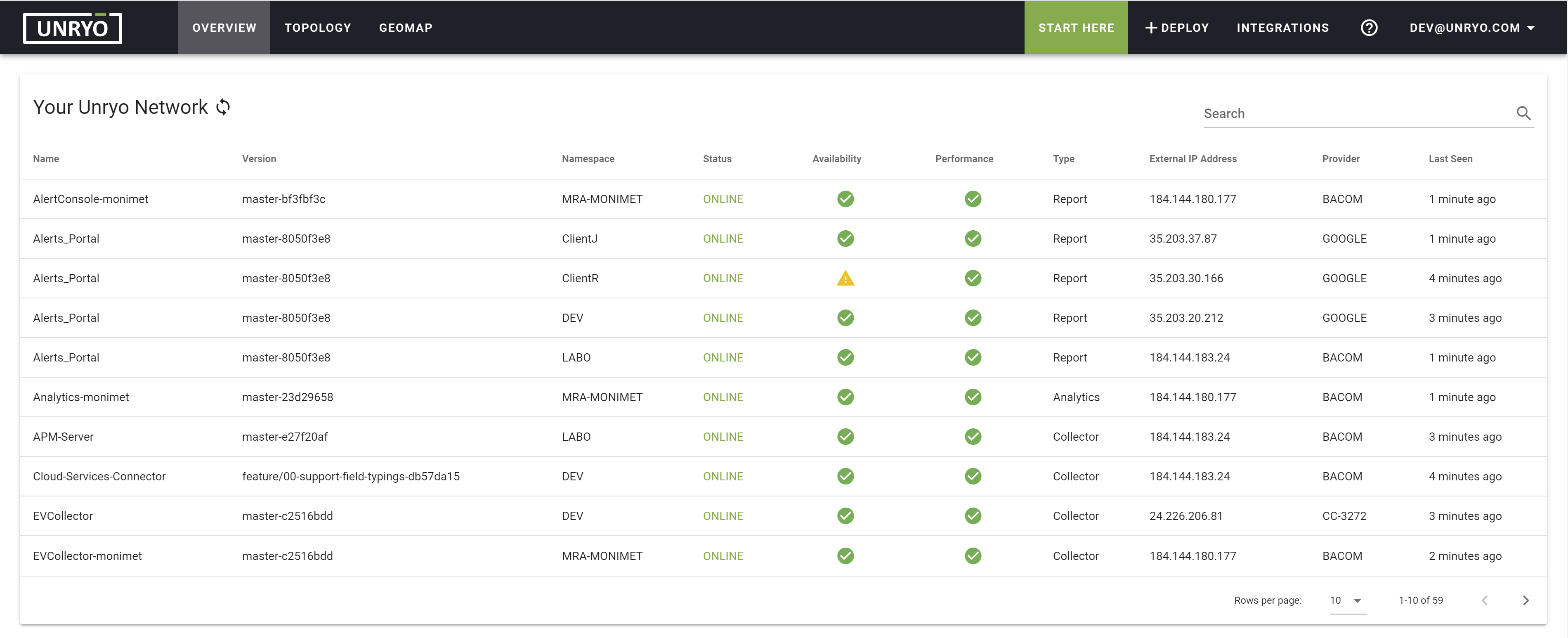Troubleshooting#
Here are the best practices to quickly identify potential problems with the Unryo platform.
Component connectivity issue#
-
Login to the Unryo Admin UI and go to the topology view to validate that all components are correctly connected and in good health.
-
Validate component logs using the Unryo
Log ManagementUI -
You can also use your container management tools. For Docker, use:
bash
docker logs <container-id|container-name>
-
To log in the container:
bash docker exec -ti <container_id> bash -
To copy file from/to the container:
bash docker cp <container_id>:/<file> . docker cp <file> <container_id>:<target path> -
To troubleshoot a metric data collection issue, you can use the --test command:
bash
docker exec <container_id> /usr/bin/telegraf --test --config /etc/telegraf/telegraf.d/<config_to_troubleshoot>.conf
- If your module is NOT connected, validate your cloud infrastructure: is your host healthy? are the docker services running? If you see the container running, consult the container logs to identify internal problems.

Database High Cardinality#
If you have high cardinality issues, you can fine-tune metric data retention and configure automatic data deletion rules.
- The data retention is set on a global basis, meaning it applies to all metrics.
- The automatic data deletion can be customized per resource type. For example, high producers of metrics, such as Kubernetes Pods or vSphere VMs, can be configured separately so their metric data and event data is deleted after a certain period of inactivity.
To configure it, go on the Data Retention & Cleanup section.